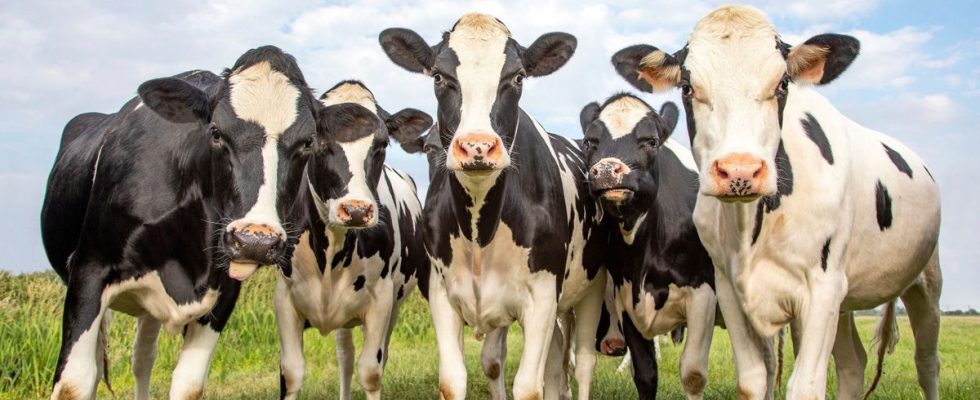Published on
Updated
Reading 3 min.
Reducing the carbon footprint of cattle farms, large emitters of greenhouse gases, is possible: an experiment carried out on a farm of the Chamber of Agriculture of Brittany (west of France) made it possible to reduce it by 15% these shows.
“In three years, the carbon footprint (…) has been reduced by 15%“, welcomed the president of the Finistère Chamber of Agriculture Jean-Hervé Caugant, presenting the study carried out at the Trévarez experimental farm, in Saint-Goazec (Finistère).
A result obtained by playing on several levers: animal feeding, herd management as well as the use of the farm’s 130 hectares of usable agricultural area (UAA).
Unlike cows who spend their lives in the stable, in Trévarez, “the cows are outside seven months of the year” and graze on grass in meadows, explains Elodie Tranvoiz, agricultural engineer responsible for research in dairy production at the regional chamber of agriculture.
In winter, in the stable, they are fed mainly with grass and corn silaged during the summer, and rapeseed meal. The latter is produced in France, unlike soybean meal, most often GMO, produced on the American continent and massively imported into Brittany for animal feed. “Between deforestation and transport, soy has a significant carbon weight“, notes Ms. Tranvoiz.
Concerning herd management, the aim is to limit the number of unproductive animals while ensuring a renewal of the herd. In order to get as close as possible to the majority of dairy farms, it is made up of 125 prim’holstein cows, the dairy breed currently most widespread in a conventional production system.
As for the land, in addition to the nearly 80 hectares of meadows and hedges which store carbon and promote biodiversity, “we worked, underlines the agronomist, on our rotations“, that is to say the fact of alternating crops according to the years in the fields and this, in a given order, in order not to exhaust the land and obtain better productivity.
Agriculture, “19% of GHGs”
Reducing GHGs in agriculture is an imperative in the fight to preserve the climate. “In France, agriculture accounts for 19% of greenhouse gas emissions and livestock farming contributes 49%.“, according to the National Institute for Agriculture, Food and the Environment (INRAE).
Among the main GHGs emitted by cattle is methane, produced “at the time of respiration” and digestion. By using, for example, natural additives, “we can reduce the methane emitted by ruminants, but we will never reach 0% emissions“, observes Elodie Tranvoiz.
Beyond a reduction in GHGs, the experience carried out in Trévarez also presents another advantage: the economic results prove to be better than in a traditional dairy farm because the expenses are less significant, whether in terms of cost feed or costs related to herd care.
For example, in Trévarez, the food cost is 80 euros to produce 1,000 liters of milk, compared to a national average of 97 euros, according to figures from Inosys, the reference system for chambers of agriculture. As for the cost of fertilizer, it is 31 euros per ha, compared to 53 on average.
Over the three years of experimentation, the farm maintained its production level (900,000 liters/year) but the margin increased, because “the cost of milk production is much lower” than it was before, notes the researcher.
After having worked since 2012 “in a productivity system with corn (to feed the cows, editor’s note) and search for technical performance through the volume of milk produced“, Anne and Jean-Marc Le Vourc’h have also “reintroduced grass into the cows’ rations”.
- “Today the cows are grazing“. With this development, they experienced a drop in production, but “we have never earned our living so well and we have never felt so good in our minds“, testifies the couple, based in Plounévez-Lochrist (Finistère).
Next objective of the experimental farm: bring Trévarez to carbon neutrality in 2027.
